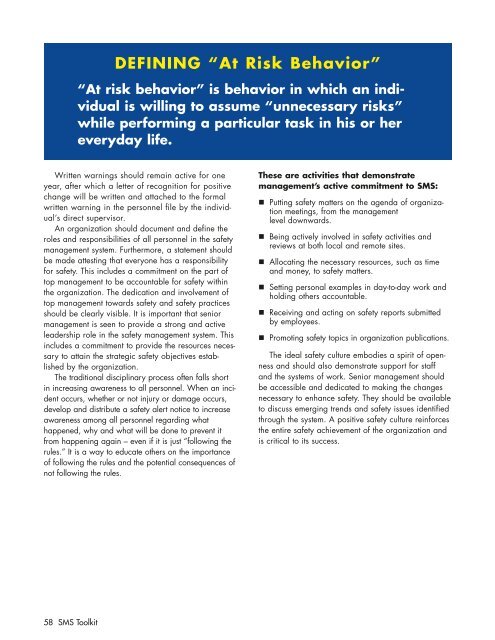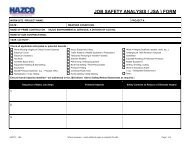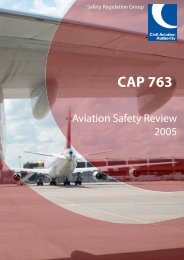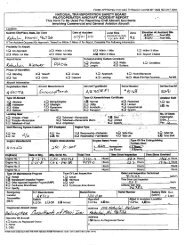International Helicopter Safety Team Safety Management System Toolkit
IHST - Safety Management Toolkit - Skybrary
IHST - Safety Management Toolkit - Skybrary
- No tags were found...
Create successful ePaper yourself
Turn your PDF publications into a flip-book with our unique Google optimized e-Paper software.
DEFINING “At Risk Behavior”<br />
“At risk behavior” is behavior in which an individual<br />
is willing to assume “unnecessary risks”<br />
while performing a particular task in his or her<br />
everyday life.<br />
Written warnings should remain active for one<br />
year, after which a letter of recognition for positive<br />
change will be written and attached to the formal<br />
written warning in the personnel file by the individual’s<br />
direct supervisor.<br />
An organization should document and define the<br />
roles and responsibilities of all personnel in the safety<br />
management system. Furthermore, a statement should<br />
be made attesting that everyone has a responsibility<br />
for safety. This includes a commitment on the part of<br />
top management to be accountable for safety within<br />
the organization. The dedication and involvement of<br />
top management towards safety and safety practices<br />
should be clearly visible. It is important that senior<br />
management is seen to provide a strong and active<br />
leadership role in the safety management system. This<br />
includes a commitment to provide the resources necessary<br />
to attain the strategic safety objectives established<br />
by the organization.<br />
The traditional disciplinary process often falls short<br />
in increasing awareness to all personnel. When an incident<br />
occurs, whether or not injury or damage occurs,<br />
develop and distribute a safety alert notice to increase<br />
awareness among all personnel regarding what<br />
happened, why and what will be done to prevent it<br />
from happening again – even if it is just “following the<br />
rules.” It is a way to educate others on the importance<br />
of following the rules and the potential consequences of<br />
not following the rules.<br />
These are activities that demonstrate<br />
management’s active commitment to SMS:<br />
Putting safety matters on the agenda of organization<br />
meetings, from the management<br />
level downwards.<br />
Being actively involved in safety activities and<br />
reviews at both local and remote sites.<br />
Allocating the necessary resources, such as time<br />
and money, to safety matters.<br />
Setting personal examples in day-to-day work and<br />
holding others accountable.<br />
Receiving and acting on safety reports submitted<br />
by employees.<br />
Promoting safety topics in organization publications.<br />
The ideal safety culture embodies a spirit of openness<br />
and should also demonstrate support for staff<br />
and the systems of work. Senior management should<br />
be accessible and dedicated to making the changes<br />
necessary to enhance safety. They should be available<br />
to discuss emerging trends and safety issues identified<br />
through the system. A positive safety culture reinforces<br />
the entire safety achievement of the organization and<br />
is critical to its success.<br />
58 SMS <strong>Toolkit</strong>







